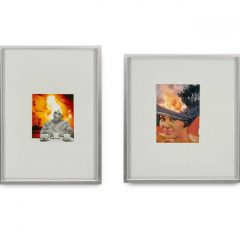[Andrea visits the Rijksmuseum, which reopened last year after a decade-long, near-$500-million renovation. While pleased to see art objects placed in historical context, she laments the museum’s reliance on an inconvenient computer labeling system. –the Artblog editors]
This was my first visit to the Rijksmuseum, Amsterdam since its refurbishment, and while 10 years was an exceptionally long time to put most of the collection of the country’s major art museum in storage, the results are superb. The most significant change, in terms of the displays, is the decision to arrange the art by period and theme, rather than medium. The glory of the museum, its paintings, were largely intended for domestic spaces, so it is appropriate and instructive to see them in the company of furniture, silver, glass, and other decorative objects. All of the work is enriched by the juxtaposition.
Contextualizing art through historical artifacts
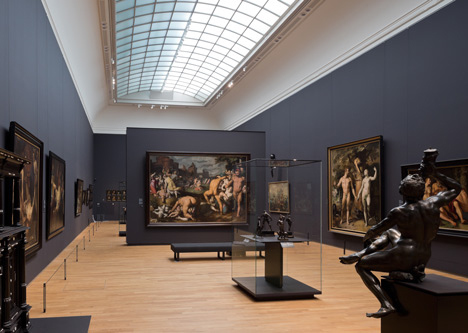
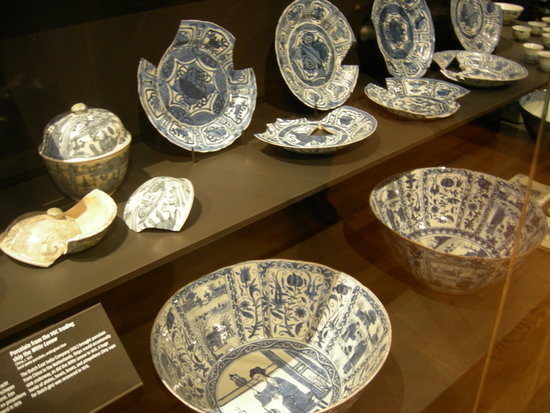
The second obvious change are those thematic displays that acknowledge current thinking about subjects such as colonialism, international trade, military conflicts, and the use of objects as secular relics. A section on colonialism includes a range of trade goods as well as a group of shards, which are the remains of broken china found in a ship that sunk. That’s something I’ve never seen in an art museum before.
The Rijksmuseum’s current approach draws from anthropology and history, in addition to the history of art, and while some visitors will likely object to what they see as political correctness, I appreciate the broader perspective, and think it will interest more visitors.
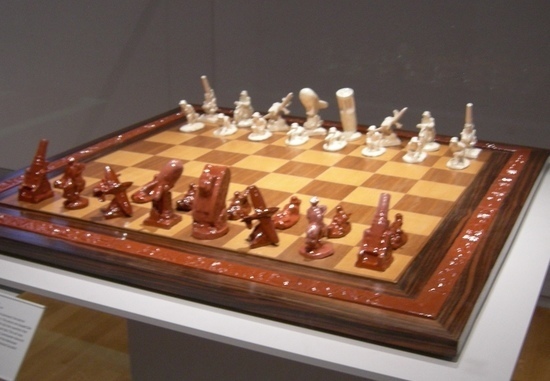
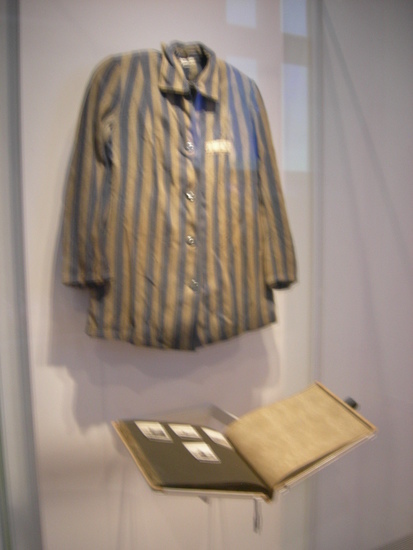
One of the more startling displays, in one of the two small, tower spaces devoted to the 20th century, is a Nazi chess set commissioned by Heinrich Himmler as a gift for a Dutch member of the Nazi party, with pawns firing rifles from the trenches. It’s in front of a second display, of the coat from the concentration camp uniform and family photo album of Isabel Wachenheimer, a German citizen who sought refuge in the Netherlands before being imprisoned. While the use of primarily historical artifacts to contextualize the art may be questionable, the juxtaposition reminds viewers that all art circulates within a social and political context, not all of which is laudable. It is also an unusually open acknowledgment of some Dutch complicity during WWII, and in marked contrast to most other countries.
Military objects as art
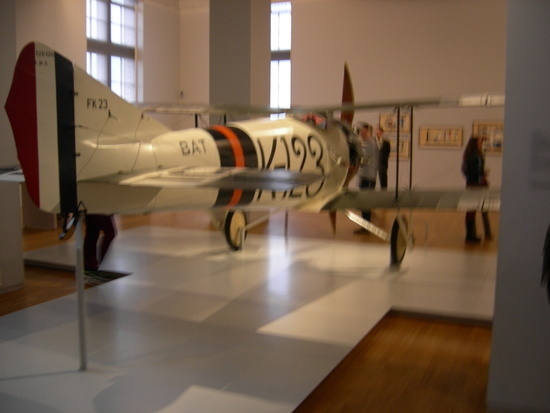
The gallery beyond this includes an F.K.23 Bantam WWI fighting plane amid the more usual design displays of furniture, tableware, and architectural designs. Military tools are rarely seen in art museum design collections; when arms and armor are displayed in art museums, they are generally ceremonial, rather than those used in actual battle. I don’t know whether the omission is intentional or not, although the Museum of Modern Art (MoMA) has long had a Bell-47D1 helicopter, which dates from the Korean War, suspended above the entry to its design galleries. While it was later certified for civilian use, the helicopter’s primary market over several decades was military, and I’ve always been a bit surprised that it has never attracted controversy. Am I the only person who thinks it is worth at least having a conversation about aestheticizing the paraphernalia of war?
The last discussion highlights a third change in the museum’s policies: its decision to include work from the 20th century, which was previously left entirely to the Stedelijk Museum, down the block. It’s clear that the Rijksmuseum won’t be emphasizing the 20th century, but the decision allows the museum to connect its historical collections with recent history as well as the present, and hence, make more sense to visitors.
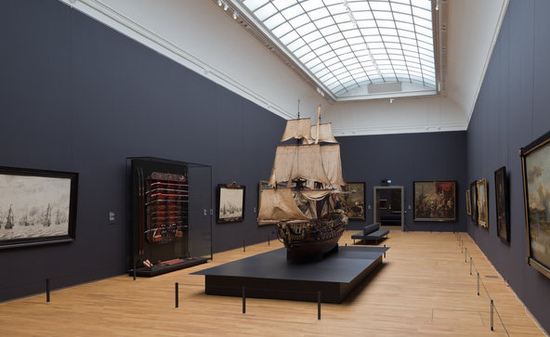
What’s lost by lack of labeling
I have only one criticism of the new installation–but a serious one–and it only applies to the jewelry, ceramics, and other collections that fall under the decorative arts. The Rijksmuseum has joined an unfortunate bandwagon of museums duped into thinking that computer files are an improvement on labels adjacent to the objects in the galleries. They aren’t. There are no object labels in these galleries, only the occasional monitor where one person at a time can view one record at a time. Scanning the display and stopping to identify an object that caught one’s eye is impossible. Actually utilizing the collections for study purposes is equally precluded, since no one has time to run back and forth from each object to the monitors and then wait for the computer to pull up each record individually. On popular days I expect there will be lines even to use the computers. These galleries have been turned into the equivalent of commercial displays: lots of pretty things to look at, with little concern for what they are.
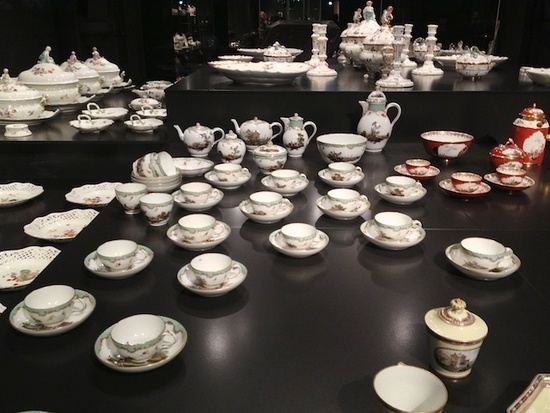
The Rijksmuseum is, unfortunately, not alone in this dreadful choice. I first encountered it at Leiden’s great ethnology museum, the Museum Volkenkunde,and the computers weren’t even working the day I visited. The museum was obviously proud of its newly installed, up-to-date displays, but the labels they had dispensed with were both cheaper to produce and more reliable. I also encountered the problem in the British Museum‘s new installation of the Percival David Collection, which it bills as a state-of-the-art research and study center. It is the finest collection of Chinese porcelain in the world, and the bulk of this great, teaching resource is now functionally label-less.
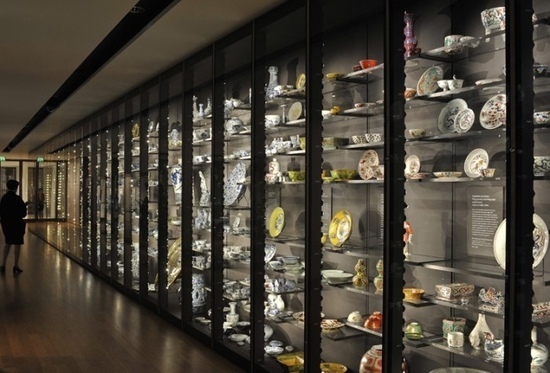
If computers are being used in the name of interactivity, the information needs to be truly interactive and more readily available. Both the Science Museum, London and the Cleveland Museum of Art have received a lot of attention for carefully planned computer systems (neither of which I have seen) that allow visitors with smartphones to personalize and enhance their viewing, and to continue their education on computers at home. I do hope these label-less museums will be willing to admit their mistake and return to a more common-sense solution. A handbook that visitors could carry around, keyed to numbers on the objects, would be low-tech and wouldn’t clutter the display cases with information.
However, I think this objection to labels misunderstands what museum collections are, and how they are used. We have become used to seeing works in temporary exhibitions presented in splendid isolation, and to judging exhibitions partially on their design. But almost all of the art in permanent collections is displaced from its native habitat. The art is never shown as originally intended. Pretending that it exists in a permanent realm of aesthetic contemplation is nonsense.
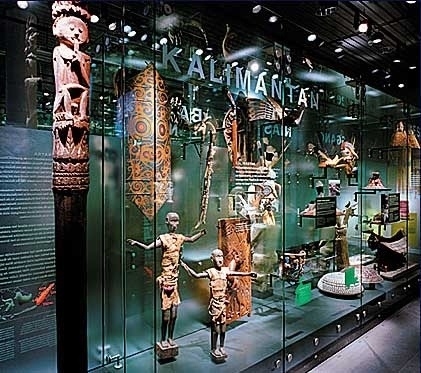
Of course, the wishes of contemporary artists present a special case. Some have objected to the visual distraction of labels, and museums have found various ways to accommodate their wishes. For Robert Ryman’s 1993 survey at MoMA, the museum handed out maps of the exhibition, printed on tabloid newspaper stock, that located each work and gave the information that is usually found on the labels. It worked very well.






